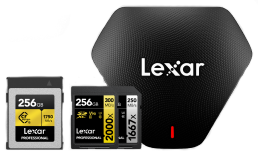
A solid-state drive (SSD) is a revolutionary storage technology that has transformed how we store and access data. But how exactly does an SSD work — and is it the right choice for you?
As the digital world moves faster than ever, storage solutions play an integral role in determining the speed, reliability, and efficiency of your devices. That’s exactly where the SSD comes into play.
In our guide, we’ve broken down everything you need to know about SSDs, how they work, and their ideal functionalities. This way, you can easily choose the right SSD for your projects. Let’s dive right in.
Key Takeaways:
- What is an SSD? An SSD is a storage device that uses flash memory to store data with no moving parts, offering speed, durability, and efficiency.
- Advantages of SSDs: SSDs provide faster load times, energy efficiency, silent operation, enhanced durability, and reliability for a wide range of tasks and devices.
- Types of SSDs: Serial advanced technology attachment (SATA) SSDs are cost-effective for general tasks, non-volatile memory express (NVMe) SSDs excel in speed for gaming and professional work, M.2 SSDs are compact for laptops, and peripheral component interconnect express (PCIe) SSDs deliver top performance for high-end systems.
- Choosing an SSD for Everyday Use: SATA SSDs are budget-friendly options offering improved performance over hard drives (HDDs) for basic computing needs.
- Choosing an SSD for Gamers and Professionals: NVMe and PCIe SSDs provide unmatched speed and efficiency for demanding applications like gaming, video editing, and rendering.
- Choosing an SSD for Laptops and Ultrabooks: M.2 SSDs offer space-saving designs and exceptional portability, ideal for lightweight devices needing faster performance.


What Is an SSD and How Does it Work?
A solid-state drive is a storage device that uses flash memory to store data. Interestingly, SSDs have no moving parts; instead, they rely on NAND memory cells to write and retrieve data at lightning-fast speeds. This unique design allows SSDs to offer significantly faster performance compared to older technologies, making them ideal for modern computing needs.
To break it down, SSDs use a controller, a built-in processor that manages how data is stored, retrieved, and maintained. Advanced algorithms ensure that data is evenly distributed across the memory cells, improving performance and extending the drive’s lifespan.
Some SSDs, like those using NVMe technology, leverage faster interfaces to achieve even higher data transfer speeds, making them ideal for demanding tasks such as video editing and gaming.
In general, SSDs are versatile and can be used in a wide range of devices, from laptops and desktops to gaming consoles and external storage solutions. They enable quick boot times, faster application loading, and seamless multitasking, transforming the overall computing experience.
In essence, an SSD can be a game-changing storage solution that prioritizes speed, efficiency, and durability.
Find out How To Easily Install An SSD in our comprehensive guide.


The Various Advantages of SSDs
Switching to an SSD is going to present you with many different benefits that can transform the way your computer (or other device) operates. From lightning-fast speeds to enhanced durability, let’s explore some of the key advantages of these storage devices:
- Incredible Speed: SSDs provide near-instant boot times, rapid application loading, and fast file transfers. Their speed makes SSDs ideal for tasks like video editing, gaming, and multitasking, where high-speed performance is critical.
- Enhanced Durability: Built without moving parts, SSDs are highly resistant to drops, shocks, and vibrations. An SSD’s durability ensures reliable performance in portable devices and rugged environments.
- Energy Efficiency: SSDs consume less power than traditional drives, leading to longer battery life in laptops and reduced energy costs, making them a greener storage option.
- Compact and Lightweight Design: SSDs are slim and lightweight, fitting seamlessly into modern devices like custom-built PCs. A small form factor also makes SSDs a space-saving solution for external storage.
- Quiet Operation: Without moving parts, SSDs operate silently, making them perfect for quiet work environments and shared spaces.
- Improved Reliability: SSDs are less prone to mechanical failure and data corruption, offering consistent performance and long-term durability even under heavy workloads.
All in all, these various benefits make SSDs a transformative upgrade for anyone seeking better, faster, more reliable storage within their computers.
Next, let’s cover the different types of SSDs that you may come across.


Different Elements That Compose an SSD
As you’re shopping for an SSD, you’re going to notice that you have several different options to choose from.
To help you better understand the functionalities and uses of each type of SSD, we’ve broken them all down below. With this guide, you’ll learn exactly which SSD is going to be ideal for your projects.
SATA SSDs
SATA (Serial ATA) is a type of interface initially designed for connecting hard drives to a computer. Today, it’s widely used to connect SSDs to systems, offering a significant improvement over traditional HDDs in terms of speed and reliability. If you’re going to come across any type of SSD, it’s likely going to be a SATA SSD, as they are some of the most commonly used and accessible SSD types.
While SATA SSDs may not match the speeds of newer technologies like NVMe, they still provide a considerable upgrade over HDDs in terms of boot times, file transfers, and overall system responsiveness. They are a cost-effective solution for general computing needs, making them an excellent choice for upgrading older systems or laptops on a limited budget.
NVMe SSDs
NVMe SSDs stand for Non-Volatile Memory Express. These unique SSDs are designed for high-performance tasks, leveraging the PCIe interface to deliver unparalleled speed. (Don’t worry: we’ll discuss PCle in a minute.)
In general, NVMe technology allows for faster data transfers, lower latency, and higher bandwidth, making it the best choice for demanding applications such as gaming, video editing, and professional workstations.
NVMe SSDs are a top-tier option for users who require maximum speed and efficiency.
M.2 SSDs
Another type of SSD that you may find is the M.2. SSD. These SSDs are compact, sleek drives that connect directly to the motherboard. They can support both SATA and NVMe interfaces, making them versatile for a range of devices.
Their small size makes them perfect for ultrabooks, laptops, and compact PC builds.
All in all, M.2 SSDs provide flexibility in performance and capacity while saving space, ensuring compatibility with modern systems.
PCle SSDs
Finally, let’s talk about Peripheral Component Interconnect Express SSDs — also known as PCle SSDs.
This type of SSD uses PCIe lanes to achieve faster data transfer rates. These drives are typically used in high-end systems and applications requiring exceptional speed, such as data centers and gaming rigs.
PCIe SSDs provide superior performance and scalability, making them ideal for professionals and enthusiasts who need the best storage capabilities available.


Choosing the Right SSDs for Your Needs
Now that you know what types of SSDs are on the market, and how each one works, it’s time to determine which one is going to be ideal for your storage needs.
Whether you’re using your device for everyday use, for professional projects, or just want to upgrade your laptop, let’s cover how you can find your perfect SSD option.
For Everyday Use
If you’re upgrading an older system or need an SSD for general tasks like browsing, streaming, and light office work, a SATA SSD is an excellent choice. These drives offer a substantial performance boost over traditional HDDs at a budget-friendly price.
Plus, they provide faster boot times, quick application loading, and enough storage capacity for most personal or home office needs.
All in all, SATA SSDs are a reliable and cost-effective option for users seeking improved everyday performance without breaking the bank.
For Gamers and Professionals
Gamers and professionals handling resource-intensive tasks like video editing, 3D rendering, or programming should consider SSDs that leverage cutting-edge technologies and interfaces, such as PCIe Gen 4 and NVMe.
NVMe (Non-Volatile Memory Express) is a protocol specifically designed for SSDs, offering blazing-fast speeds, minimal latency, and high bandwidth. This makes NVMe SSDs ideal for gamers seeking shorter load times and professionals needing rapid rendering and file transfers.
PCIe (Peripheral Component Interconnect Express) is the interface used by many high-performance SSDs, including those with NVMe technology. PCIe Gen 4 SSDs, for example, deliver top-tier performance, maximizing efficiency and productivity for high-end setups.
For example, an SSD like the Lexar NM790 combines these features: it uses the M.2 2280 form factor for compact compatibility, PCIe Gen 4 for high-speed connectivity, and NVMe for seamless performance in demanding workflows.
Read more about the best SSDs for gaming in our blog post.
For Laptops and Ultrabooks
Portability and space-saving design are crucial for laptops and ultrabooks, making M.2 SSDs the perfect solution. Their compact size allows them to fit directly onto the motherboard, freeing up internal space while delivering exceptional performance.
M.2 SSDs can support both SATA and NVMe technologies, offering flexibility in performance and cost.
For lightweight laptops, these drives provide faster boot times, extended battery life, and a significant boost in overall efficiency.


Why SSDs are the Future of Storage
Whether you need faster load times for everyday tasks, seamless performance for gaming and professional workflows, or compact storage for portable devices, SSDs deliver the reliability and power required to enhance your computing experience. Are you ready to experience the difference an SSD can make?
Explore Lexar’s range of top-tier SSDs, designed to keep up with your demands and elevate your system’s performance. Whether you’re upgrading or building from scratch, Lexar has the perfect SSD for your setup.




